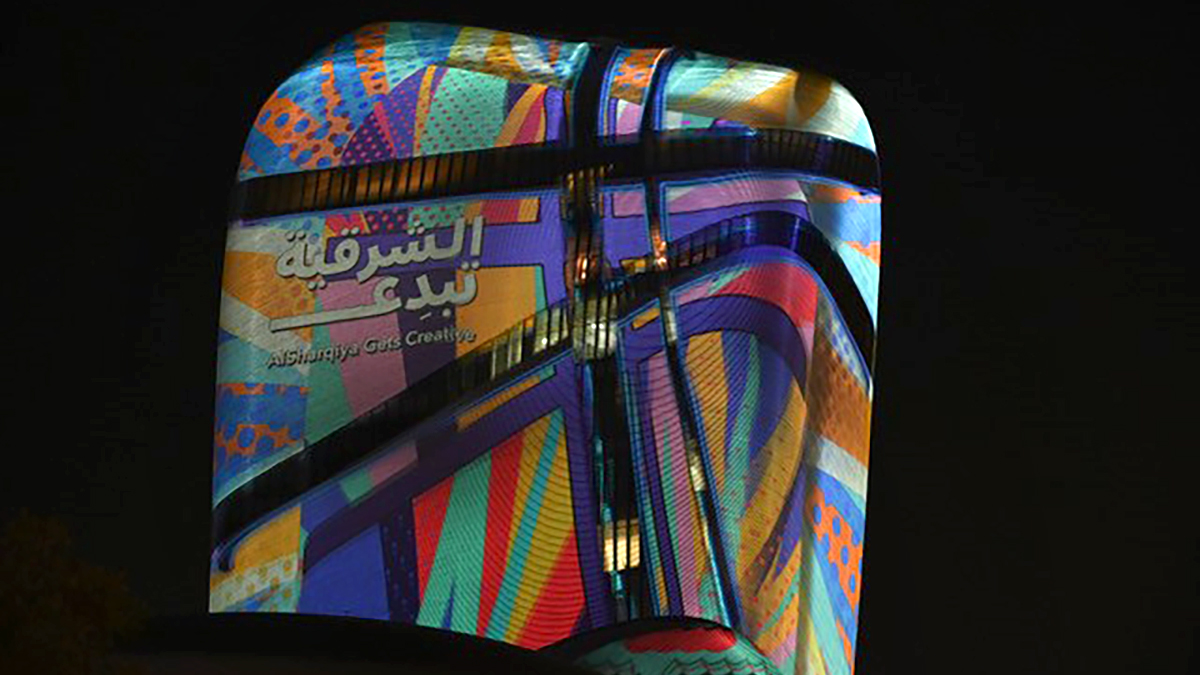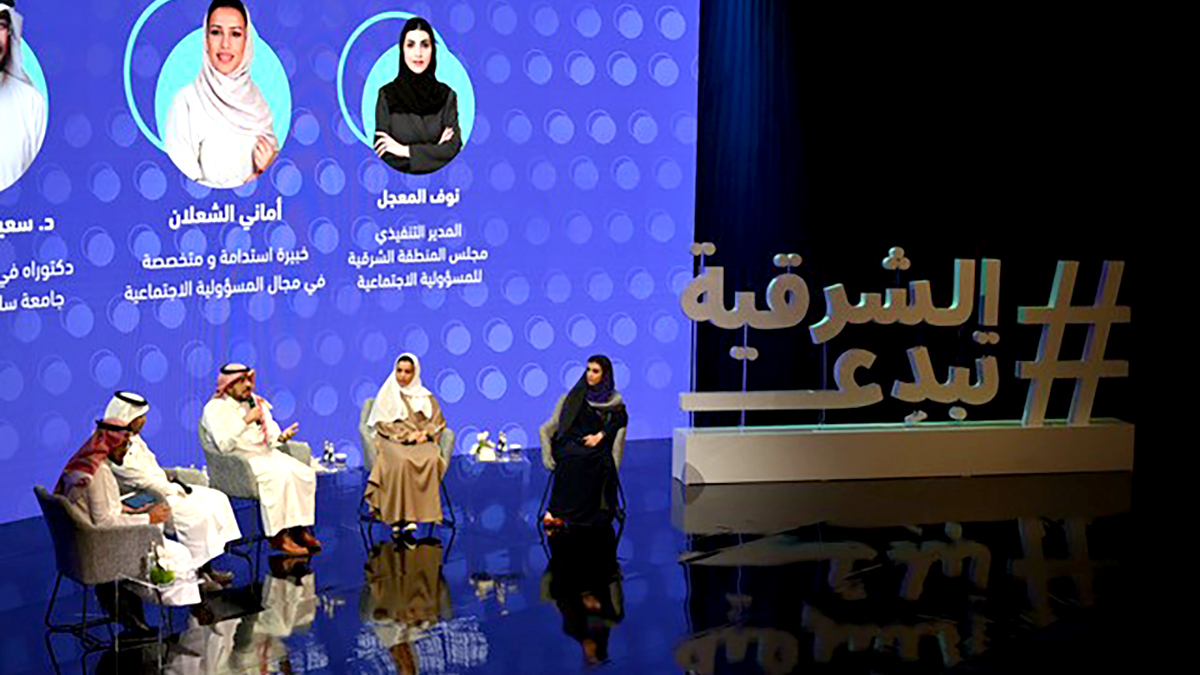Al-Shariqya Creates
Al-Sharqiyah concludes activities with dialogue on society and creativity

Global November 22, 2022
Building a better world through creativity, collaboration, and sustainability.
The King Abdulaziz Center for World Culture (Ithra) recently closed the curtain on the "Al-Sharqiya Creates" initiative with a dialogue session titled Community Partnerships and Creativity, which dealt with the topic of shaping the mental image of the Eastern Province and taking it as a sustainable creativity.
More than 850 people attended the closing ceremony of the initiative, which was launched by the Center three years ago and this year witnessed the participation of more than 300 entities from the public, private, and nonprofit sectors. It included about 540 events organized across various cities and governorates of the Eastern Province.
Unique model
The ceremony began with a speech by Hadeel Al-Issa, the general supervisor of the (Al-Sharqiya Innovates) initiative, and head of the Communication Unit at Ithra. Al-Issa explained that creative communities usually need a platform that provides them with opportunities and aspects of cooperation through support dedicated to groups or individuals, and that is why the workers on the initiative were keen to be the platform "through which creativity extends."
Al-Issa pointed to the future of the initiative, promising the consolidation and growth of the idea in the coming years so that the Eastern Province and the (Al-Sharqiya Innovates) initiative become a unique model for an annual sustainable season that reflects on the region as a whole.
Enablers of creativity
The dialogue session, which included leaders and specialists in partnerships and social responsibility, highlighted the capabilities of creativity and its components, making the Eastern Province among the foremost creative cities in the Kingdom with an alliance of partners and concerted efforts under one umbrella.
Yousef Al-Mutairi, head of Communication and Marketing at Ithra, described the future of creativity as based on individual governmental and economic dimensions.
"Sustainability is the gateway to the creative economy and the key to strategic work, and through the (Al-Sharqiya Innovates) initiative, the concept of social work has shined to reveal a reality rich in creativity," Al-Mutairi said. He added that this as the number of partnerships increased by 30% and the number of programs by 60% compared to last year.
According to UNESCO, the growth rate of the creative sector is estimated at approximately 29%, and its contribution to reducing unemployment by 26%, improving per capita income by 24%, all of which show the sustainable benefit of the creative economy in terms of human capital, and the view of the individual as a supporter of the economy.

Indicators of creativity
Saeed Al-Amoudi, a specialist in creative cities from the University of Salford in the U.K., spoke about the most prominent indicators of creative values and the image of creative cities that Al-Sharqiyah was able to achieve through the initiative.
He added that this was especially true since the internal systems of cities are foundations on which the pillars of creativity are built, by pumping a stream of services and activities identified by UNESCO within 13 types.
Al-Amoudi said a city's residents are the first engine to spread creativity and combine ideas under one umbrella, and this is what the (Al-Sharqiya Creates) initiative has achieved. He also noted the economic impact creativity has on countires, in term of GDP as well as the overall quality of life.
Sustainable Twinning
The executive director of the Eastern Province Council for Social Responsibility (ASR), Nouf Al-Mojil, explained that twinning social responsibility and creativity is imperative. Social responsibility is the development of the place and the human being, and there is nothing better than creativity as a means of transmitting the values and objectives of social responsibility, as two sides of the same coin.
Al-Mojil pointed out that UNESCO does not register a city within the Creative Cities Network unless community interaction resulting from dialogue, inclusiveness and documentation is achieved, which produces flexible cities that look forward to a better future in light of enablers and motives that contribute to supporting creative works.
The importance of investment
Amani Al Shaalan, sustainability expert and CSR specialist, touched on the role played by the private sector in supporting human resources.
"There are four drivers of social responsibility, the most important of which is what reflects positively on the work of companies and their reputation," said al Shaalan. "We have always encouraged companies to take on this drive by disclosing the extent to which sustainability is being applied in their social projects, initiatives and programs, as well as looking for what drives creativity."
"Companies face a great opportunity in terms of social responsibility, in addition to advanced marketing methods, so we must start opening paths for young people and innovators and prioritize investment for them," she said.



